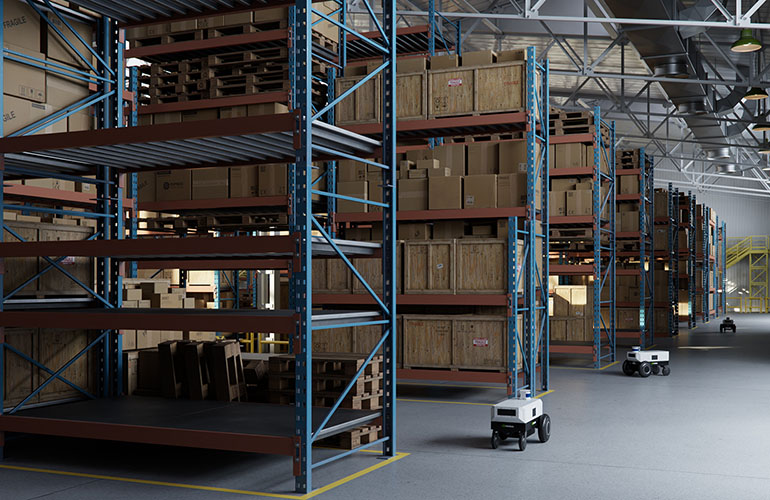NVIDIA adds AMR fleet management tools to Isaac ROS

NVIDIA added features for easier fleet management for AMRs to its Isaac ROS software. | Source: NVIDIA
NVIDIA released the latest update to its Isaac Robot Operating System (ROS) software, Developer Preview (DP) 2. NVIDIA’s Isaac ROS is made up of a collection of hardware-accelerated packages, including individual packages (GEMs) and complete pipelines (NITROS), that can help ROS developers build solutions on NVIDIA hardware.
The updates include new cloud- and edge-to-robot task management and monitoring software for autonomous mobile robots (AMRs) and features for developers working with ROS 2, the more hardened, secure version of Open Robotics‘ middleware suite.
“NVIDIA continues to show strong commitment to the ROS developer community with its consistent Isaac ROS releases,” Brian Gerkey, CEO of Open Robotics, said. “With 20 Isaac ROS packages released in the past year, NVIDIA is making it easier for developers to embrace AI and improve the perception stacks in their ROS-based applications.”
Gerkey was a recent guest on The Robot Report Podcast. He discussed the development and evolution of ROS and why open-source software has played such a pivotal role in the growth of the robotics industry and in the acceleration of robotics research in university and corporate robotic labs around the world.
NVIDIA’s release includes general performance improvements and three new features: Mission Dispatch and Client, FreeSpace Segmentation and H.264 video Encode and Decode.
Mission Dispatch and Client is an open-source CPU package that assigns and monitors tasks from a fleet management system to the robot. The microservice is cloud-native and can be integrated as part of larger fleet management systems.
Dispatch and Client communicate with ROS 2 robots using VDA5050, an open standard for communications that is explicitly designed for fleets of robots, and transmits messages wirelessly over MQTT, a lightweight and OASIS standard messaging protocol for Internet of Things (IoT) applications.
Some ROS 2 clients, like OTTO Motors and InOrbit with their recently announced VDA5050 Connector, have already verified Mission Dispatch to interpolate with their solutions.
“As mobile robot deployment in the real world accelerates, interoperability is becoming increasingly critical,” said Ryan Gariepy, CTO at OTTO Motors. “Bridging VDA5050 with ROS2 as an open-source community will promote innovation in fleet management solutions while allowing robot makers to focus on differentiation.”
Mission Client is available as a package in Isaac ROS GitHub, is compatible with ROS 2 Humble and is pre-integrated with the Nav2 navigation stack. The navigation stack assigns and tracks navigation and other tasks on the robot.
NVIDIA’s second new feature, FreeSpace Segmentation, is a hardware-accelerated package used to produce a vision AI-based occupancy grid in the proximity of the robot that can be used as an input to the navigation stack. The final new feature, H.264 Encode and Decode, are hardware-accelerated packages for compressed video data recording and playback.
NVIDIA and Open Robotics have been working together to accelerate the performance of ROS 2 on NVIDIA’s Jetson edge AI platform and GPU-based systems for some time now. The companies’ initiatives aim to reduce development time and improve performance for developers seeking to incorporate computing vision and machine learning functionality into their ROS-based applications.
The post NVIDIA adds AMR fleet management tools to Isaac ROS appeared first on The Robot Report.
from The Robot Report - Robotics News, Analysis & Research https://ift.tt/EhMHj1C
via artificialconference
Comments
Post a Comment